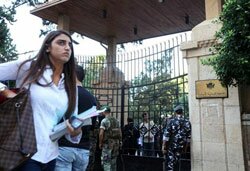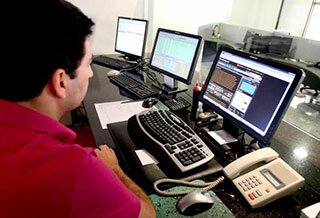
The Central Administration of Statistics released the latest compilation of data on population and education in Lebanon Thursday, revealing that largely little has changed numbers-wise over the past eight years in the country.
The CAS held a news conference in which its director, Manal Tutelian, distributed a report on population, and one on education.
The report on population states that the total number of people living in the country between 2004 and 2007 has remained roughly constant, at about 3.7 million people. The oldest statistics available on the CAS website are from 2004, and both national population figures exclude residents of Palestinian camps.
The two reports are dated April 2012, but some of the statistical data goes back to 2007 and 2009.
For many statistical categories there was no comparable data from previous years. The number of young people in the country has slightly decreased, with people aged 24 and younger making up 44 percent of the population, as opposed to 47 percent of the population in 2004.
Demographically, Lebanon has a much older population compared to other Middle Eastern countries where young people make up majorities.
The number of newborns remains relatively low, with 48,364 boys and 46,854 girls born in 2010, or roughly a 20 percent increase since 2004.
The number of annual marriages increased by about 10,000 between 2010 and 2004, according to the report. The average age for marriage was 27, with 2 percent of girls being wed before they turned 15, and 13 percent of girls being married before they were 18. Divorce rates, meanwhile, have remained roughly constant since 2004.
Education figures have also remained roughly steady. The report on education says 32 percent of the population was enrolled in university, vocational, technical or primary and secondary education, compared to 33 percent of the population was enrolled in education in 2004.
Also, 38 percent of households in the country were reported to have at least one person with a university degree.
Women’s illiteracy has dipped slightly since 2004, but it is still twice the level of men’s illiteracy in the country. In 2010, 16 percent of women were illiterate and 8 percent of men were illiterate.
The CAS also reported that almost 33 percent of people in the country over 15 spoke French, and 22 percent spoke English. It said one-quarter of primary and secondary schools taught English as a foreign language, while 53 percent taught French and 22 percent taught both.
For university studies, 60 percent of enrolled students were majoring in non-technical fields such as social sciences, business, law, the humanities and the arts. Business was the most popular degree in 2010.









